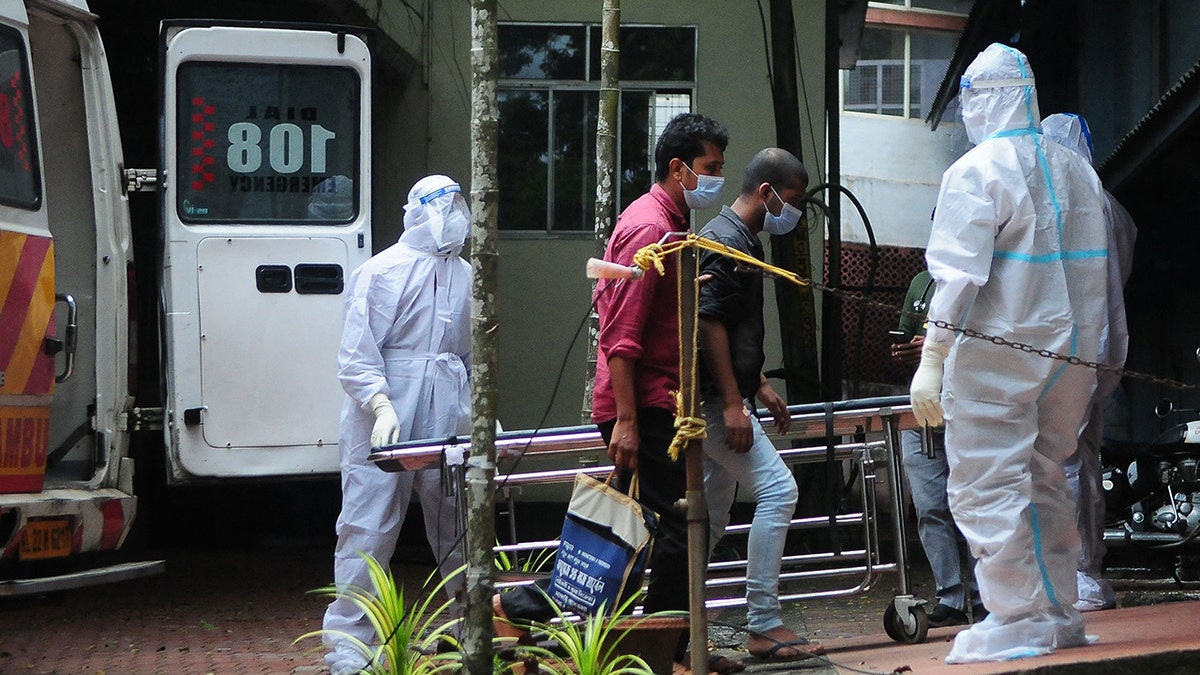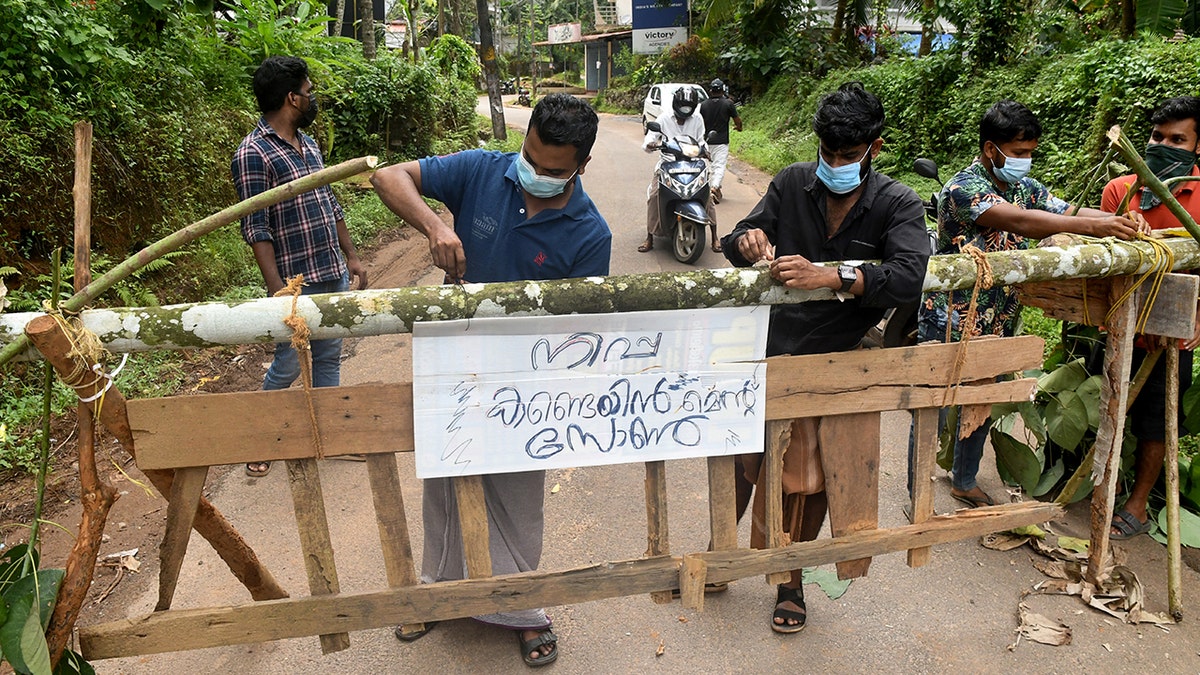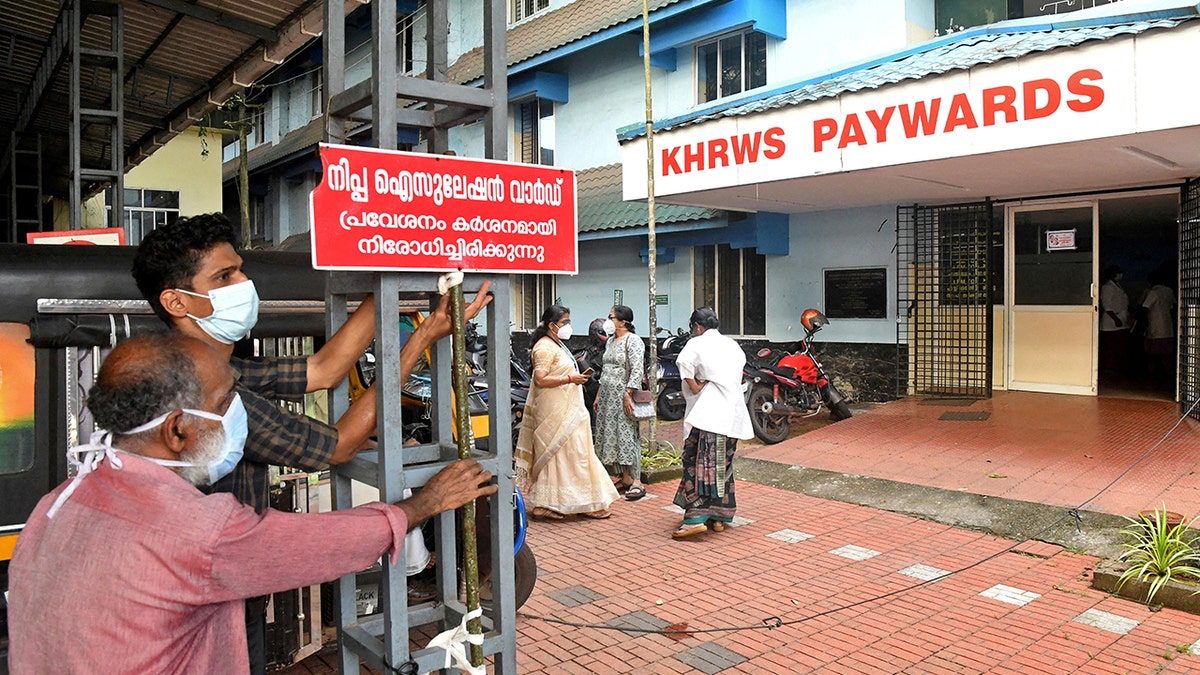Fox News Flash top headlines for September 14
Fox News Flash top headlines are here. Check out what's clicking on Foxnews.com.
Health officials in India are racing Thursday to contain an outbreak of the Nipah virus, which has already killed two and carries a fatality rate the World Health Organization says is as high as 75%.
Around 800 people have been tested over the last few days in the country’s southern Kerala state, with two adults and a child placed in a hospital after receiving a positive diagnosis, according to Reuters.
"We are testing human beings... and at the same time experts are collecting fluid samples from forested areas that could be the hotspot for the spread," Veena George, the state’s health minister, told the news agency. "We are in a stage of hypervigilance and detection."
Public offices, government buildings and religious institutions have been shuttered in parts of the region as samples of bat urine, animal droppings and half-eaten fruit were taken from the village where the first victim lived, Reuters also reports.
COVID-19, FLU AND RSV VACCINES ARE ALL AVAILABLE THIS FALL: SEE WHAT SOME DOCTORS RECOMMEND AND WHY

Health workers wearing protective gear shift people who have been in contact with a person infected with the Nipah virus to an isolation center at a government hospital in Kozhikode, in India's Kerala state, on Thursday. (AFP via Getty Images)
The Centers for Disease Control and Prevention (CDC) describes the Nipah virus as being zoonotic — meaning that it can be transmitted from animals to people — and that fruit bats are the primary carriers of it in nature.
"Nipah virus is also known to cause illness in pigs and people," the CDC says, adding, "Infection with NiV is associated with encephalitis (swelling of the brain) and can cause mild to severe illness and even death."
The World Health Organization (WHO) says the Nipah virus fatality rate is estimated at 40% to 75%, but that it can "vary by outbreak depending on local capabilities for epidemiological surveillance and clinical management."
"Infected people initially develop symptoms including fever, headaches, myalgia (muscle pain), vomiting and sore throat," WHO also said. "This can be followed by dizziness, drowsiness, altered consciousness, and neurological signs that indicate acute encephalitis. Some people can also experience atypical pneumonia and severe respiratory problems, including acute respiratory distress. Encephalitis and seizures occur in severe cases, progressing to coma within 24 to 48 hours."
CDC WARNS OF ‘INCREASED’ RSV ACTIVITY IN SOUTHEASTERN US

Residents fix a sign reading "Nipah containment zone" to prevent the spread of Nipah virus in India's Kerala state on Wednesday. (Reuters)
The CDC says the virus is transmitted through direct contact with infected animals or humans and their bodily fluids, or by eating food products that have been contaminated by animals.
"Treatment is limited to supportive care, including rest, hydration, and treatment of symptoms as they occur," according to the CDC.

Staff members install a sign reading, "Nipah isolation ward, entry strictly prohibited," at a hospital where a ward is being prepared for suspected Nipah virus patients in the Kozhikode district of India's Kerala state on Tuesday. (Reuters)
CLICK HERE TO GET THE FOX NEWS APP
A series of Nipah virus outbreaks in India and Bangladesh killed 62 people in 2001 and 21 people in India’s Kerala state in 2018, Reuters reports.





















